International Expansion in Canada – Your Guide
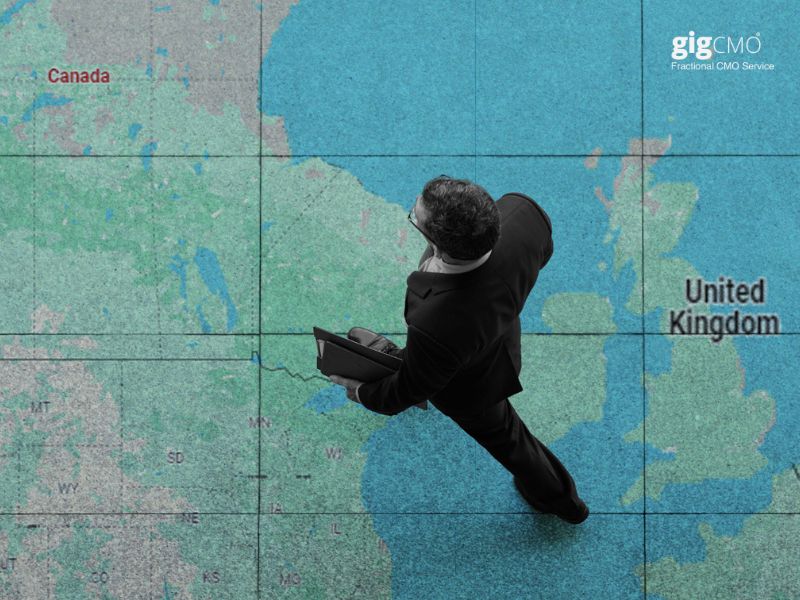
Canada's economy relies heavily on international trade, with exports and imports of goods and services accounting for roughly one-third of GDP. The country's three main trading partners are the United States, China, and the United Kingdom.
- Canada ranks 6 in the Global Cities Index, which assesses the economic strength of cities worldwide. Source: Schroders
- Canada's GDP annual growth rate was 3.8% in 2022. Source: The World Bank
- GDP Per Capita in Canada reached 58,348 USD in 2022. Source: The World Bank
- Canada ranks 3rd as the best country for starting a business. Source: The World Bank
- The current population of Canada is 40,969,305 based on Canada's population clock (real-time model). Source: Statistics Canada
- Canada leads the G7 for the most educated workforce. Source: Statistics Canada
- Canada ranks first among G7 countries for its ease of paying taxes and the low total tax burden for small and medium-sized businesses. Source: PWC
Before entering or expanding in the Canadian market, it's crucial to assess your business’s market readiness. That’s why we’ve created the Market Readiness Audit—a step-by-step guide to help you evaluate your business’s strengths, gaps, and strategic positioning for growth.
Provinces and Territories of Canada
Canada is divided into provinces and territories, and cities of various sizes contribute to the country's population, which is one of the largest in the world. The country is divided into three territories, and a total of 10 provinces.
Provinces
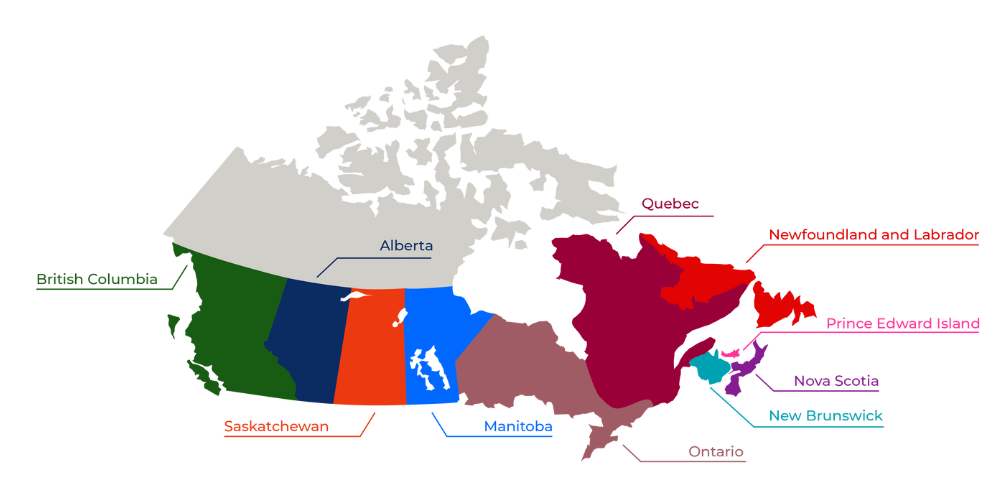
Territories
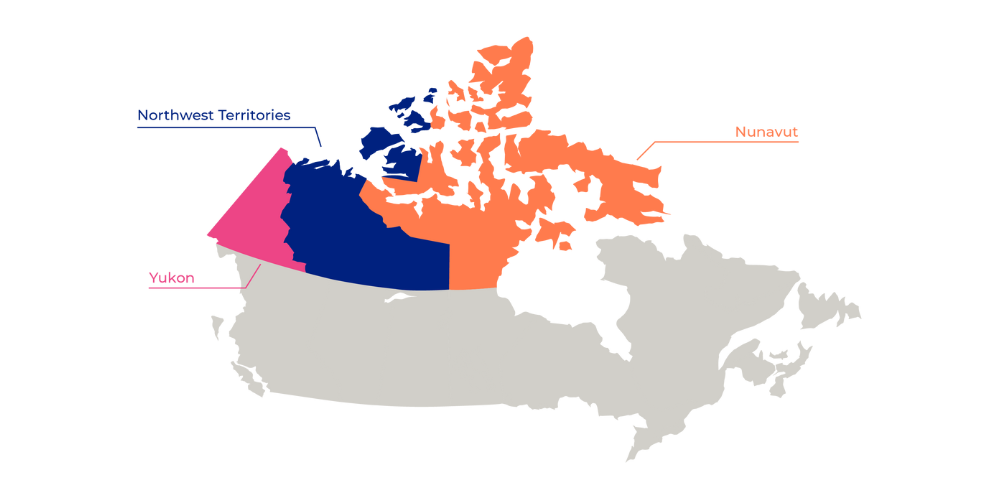
Largest Cities in Canada by Population
When it comes to Canadian cities, the definitions of what constitutes a 'city' differ per province. For example, any location that qualifies as a city in Alberta must have a population more than 10,000 people, as well as additional criteria such as the size of the area's land parcels and buildings. In British Columbia, a community can be classified as a city if it has a population of more than 5,000 people, even if that number drops in the future.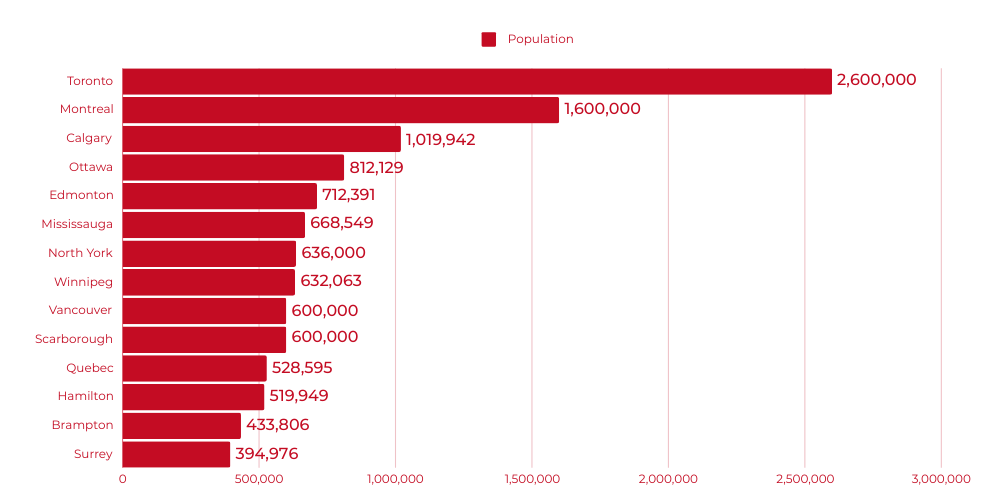
Source: World Population Review More cities listed here
Canada Demographics
Canadians considered their ethnic origin to be Canadian. When reading these figures, keep in mind that census respondents may identify multiple ethnic groups. Aboriginal people in Canada are rising twice as fast as the national average. Currently, about 22% of the population is foreign-born, with Asia accounting for roughly 60% of new immigrants, mainly China and India.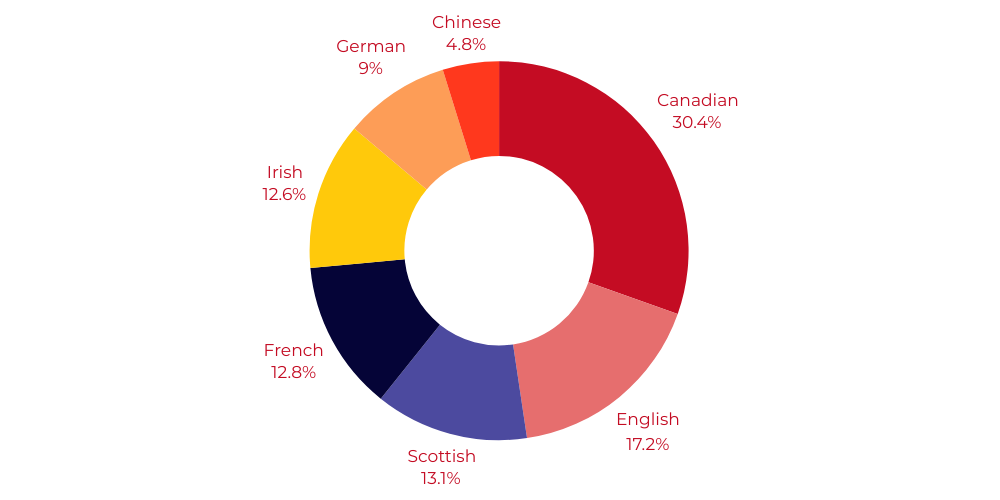
Source: World Population Review
- Canadian - 32.3%
- English - 18.3%
- Scottish - 13.9%
- French - 13.6%
- Irish - 13.4%
- German - 9.6%
- Chinese - 5.1%
Proportion of Total Population
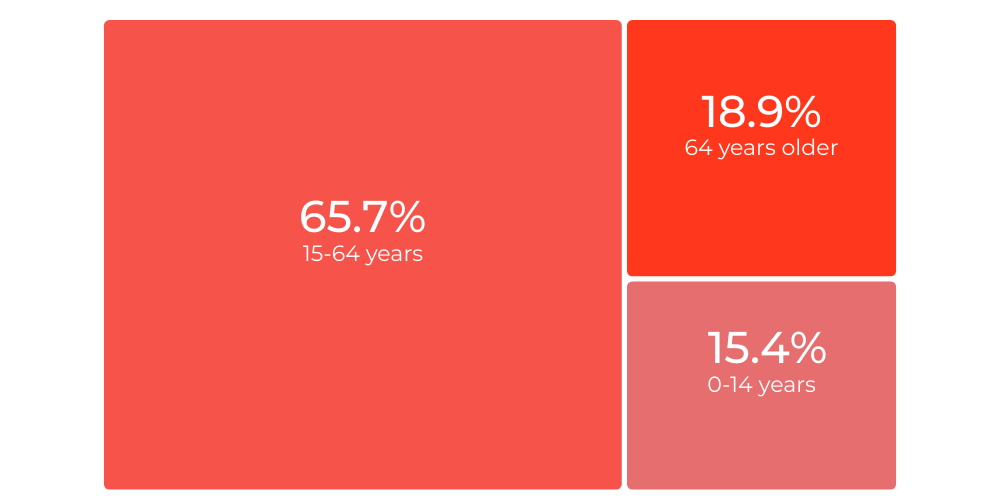
Source: Statistics Canada
- 0-14 years - 15.4%
- 15-64 years - 65.7%
- 64 years older - 18.9%
Spoken Languages
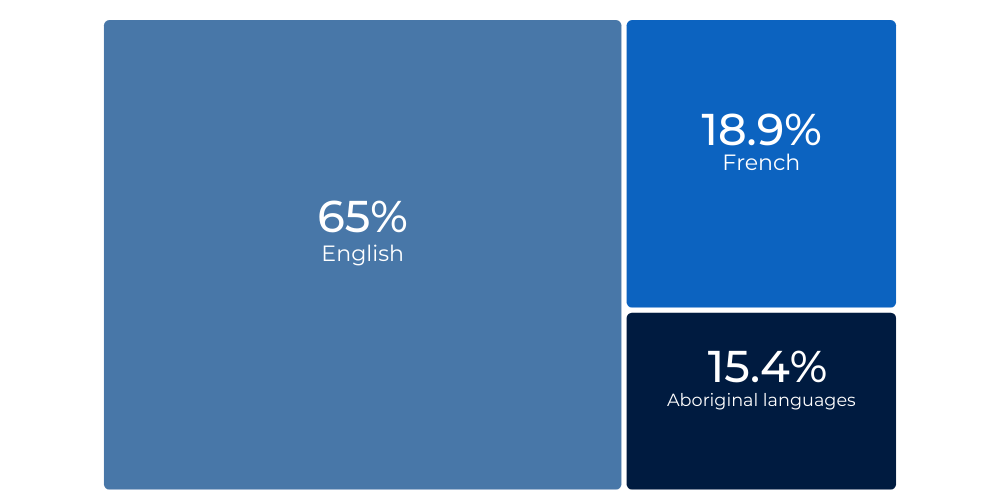
- English - 65%
- French - 20.6%
- Aboriginal languages – 13.1%
Ease of Doing Business in Canada
Canada is a member of the Organisation for Economic Cooperation and Development (OECD) and the Group of Eight (G8), and it is one of the world's top ten trading countries, with a highly globalised economy. Canada ranked 23rd in 'Ease of Doing Business' According to the World Bank's report 2022.
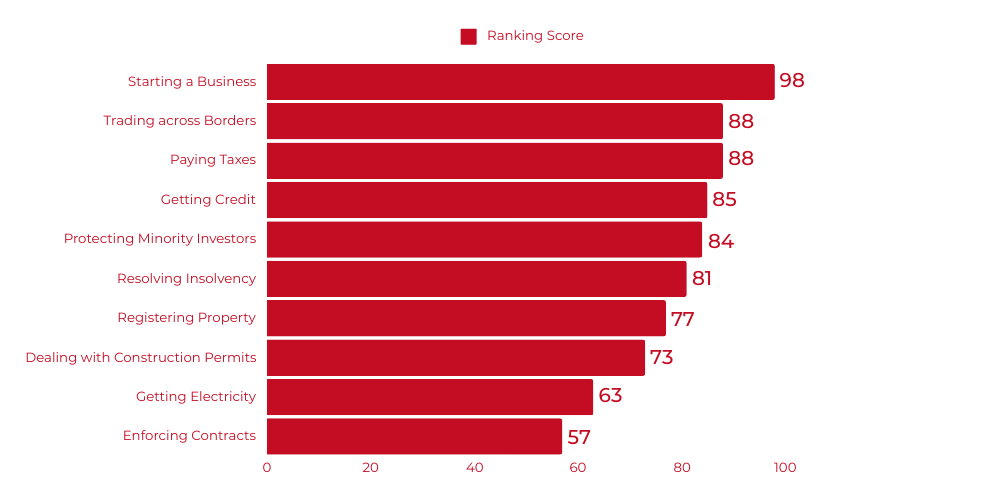
Source: Statista
- Starting a Business - 98
- Trading across Borders - 88
- Paying Taxes - 88
- Getting Credit - 85
- Protecting Minority Investors - 84
- Resolving Insolvency - 81
- Registering Property - 77
- Dealing with Construction Permits - 73
- Getting Electricity - 63
- Enforcing Contracts - 57
Corporate Tax Rates and Small Business Tax Rates in Canada
Several factors influence how much corporation tax your business must pay in Canada. The corporation tax rate in Canada is determined by the province in which your firm is located, the size of the company (how much revenue is made), and the source of income, whether the business earns active or passive income.
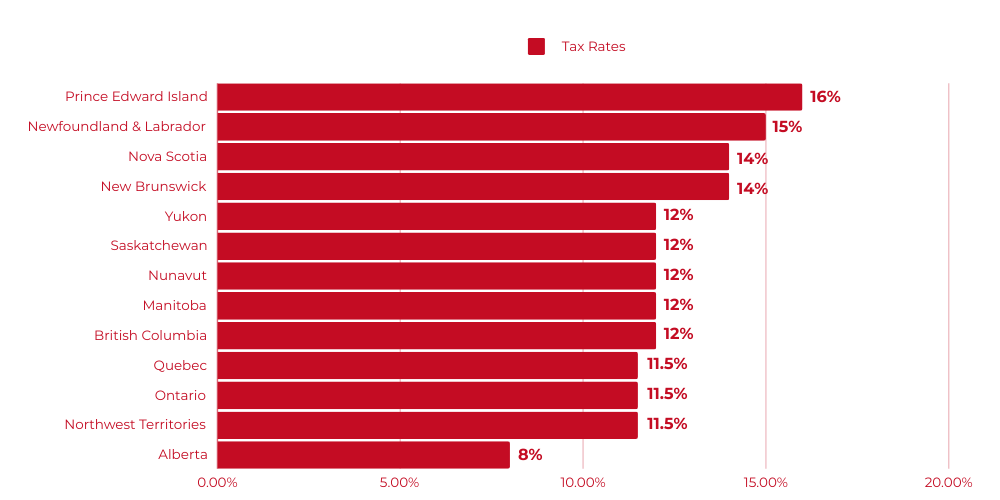
Source: WTC
- Alberta - 8%
- British Columbia - 12%
- Manitoba - 12%
- New Brunswick - 14%
- Newfoundland & Labrador - 15%
- Northwest Territories - 11.5%
- Nova Scotia - 14%
- Nunavut - 12%
- Ontario - 11.5%
- Prince Edward Island - 16%
- Quebec - 11.5%
- Saskatchewan - 12%
- Yukon - 12%
Canadian Transport Connectivity
Given Canada's enormous landmass and widely scattered population, an efficient and accessible transportation system is critical for connecting people and facilitating economic activity. Canada's multimodal transportation system is made up of several important assets and networks that connect all of the country's regions.
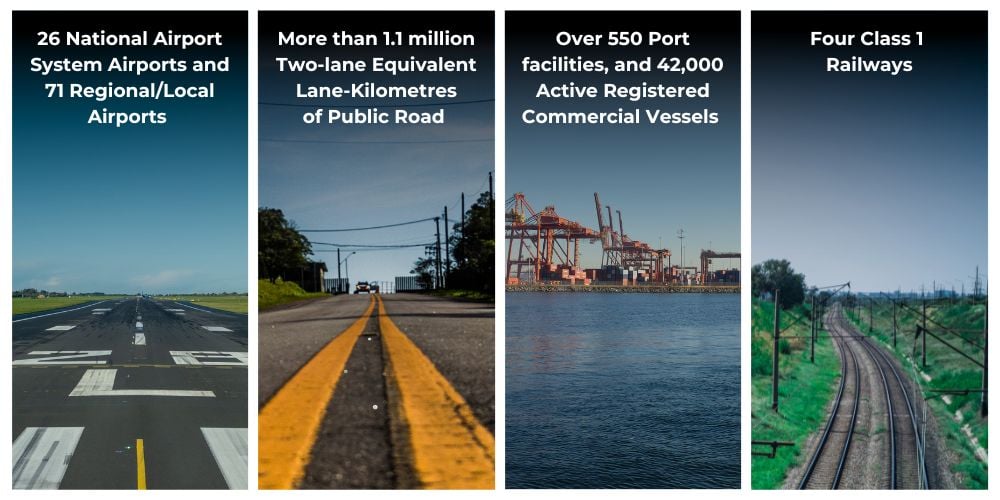
Source: Transport Canada
- Air - 26 National Airport System airports and 71 regional/local airports
- Rail - Four Class I railways
- Marine - Over 550 port facilities, and 42,000 active registered commercial vessels
- Road - More than 1.1 million two-lane equivalent lane-kilometres of public road
Gross Domestic Product (GDP) by Cities?
Canadian provinces and territories sorted by descending GDP (at current prices and expenditure-based) These are focused on measuring activities related to the production of goods and services, their sales in end markets, the supporting financial transactions, and resulting wealth positions.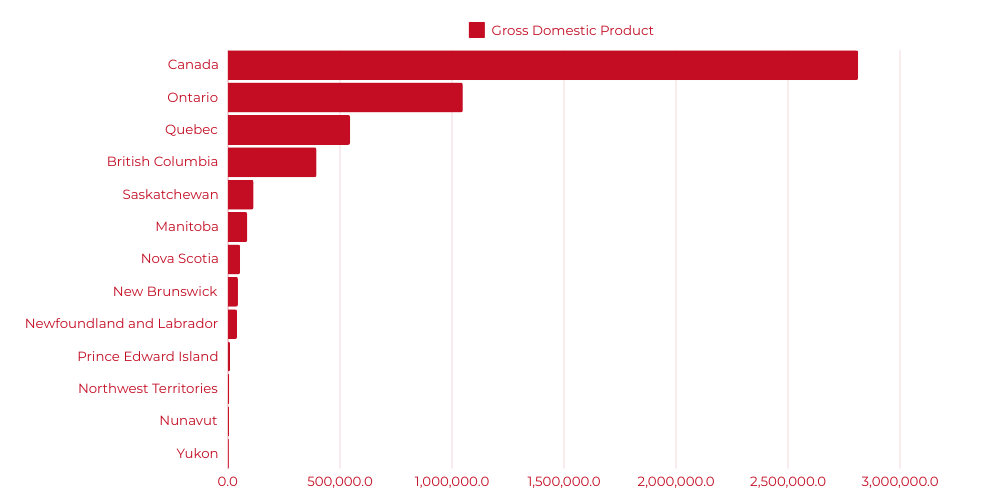
Source: Statistics Canada
- Canada - 2,813,289
- Ontario - 1,048,258
- Quebec - 545,594
- British Columbia - 395,215
- Saskatchewan - 114,412
- Manitoba - 86,531
- Nova Scotia - 54,383
- New Brunswick - 44,501
- Newfoundland and Labrador - 40,720
- Prince Edward Island - 9,376
- Northwest Territories - 5,574
- Nunavut - 4,753
- Yukon - 3,930
Gross Domestic Product (GDP) of Canada by Industry
The Canadian economy grew 1.5% in the first ten months of 2023 compared to the same period in 2022. Real GDP from service-producing industries increased by 2.2%, with year-to-date advances in most industries. The most significant increases were in arts/entertainment/recreation (+15.0%) and food and accommodation services (+6.5%). The greatest was seen in management of companies (-33.4%).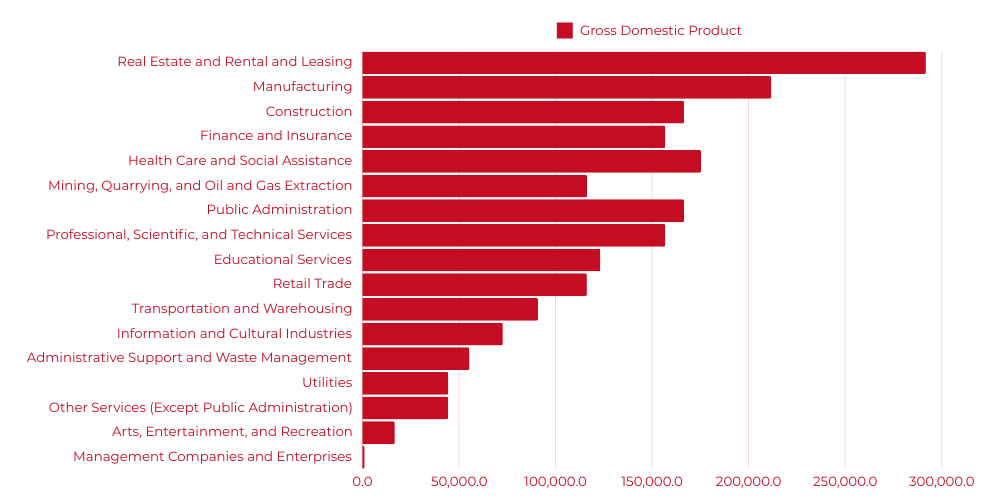
Source: Statistics Canada, Statista
- Real Estate and Rental and Leasing - 291,798
- Manufacturing - 211,801
- Construction - 166,552
- Finance and Insurance - 156,876
- Health Care and Social Assistance - 175,418
- Mining, Quarrying, and Oil and Gas Extraction - 116,354
- Public Administration - 166,689
- Professional, Scientific, and Technical Services - 156,913
- Educational Services - 123,280
- Retail Trade - 116,260 - Wholesale Trade
- Transportation and Warehousing - 90,955
- Information and Cultural Industries - 72,732
- Administrative Support and Waste Management - 55,464
- Utilities - 44,514
- Other Services (Except Public Administration) - 44,485
- Arts, Entertainment, and Recreation - 16,810
- Management Companies and Enterprises - 1,209
Emerging Tech Cities in Canada
The age of tech dominance in one place is over, so tech professionals and no longer need to rush to Silicon Valley to pursue their ambitions. That's correct! When it comes to big technology centres, Canada is among the top.
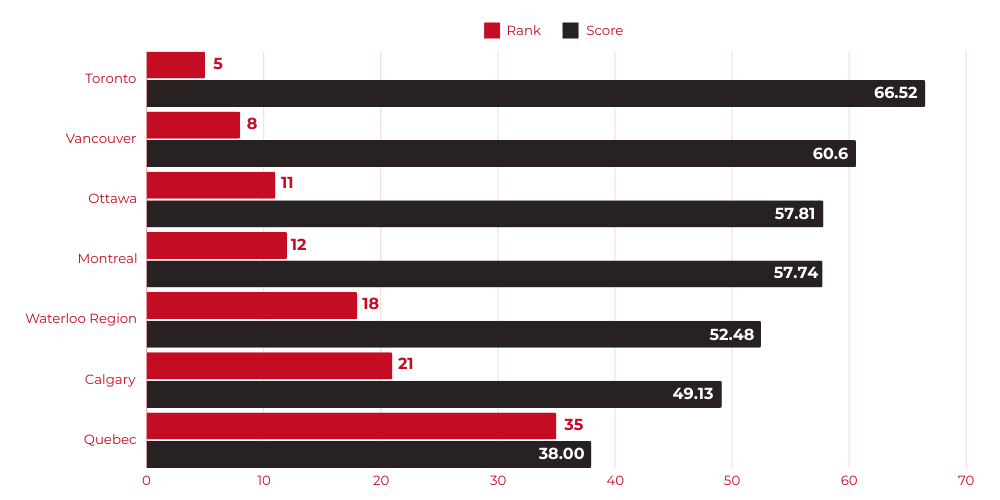
Source: CBRE's 2023 Scoring Tech Talent Report, MDC Immigration Specialist
- Toronto – Rank 5 - Scores 66.52
- Vancouver – Rank 8 – Scores 60.60
- Ottawa - Rank 11 – Scores 57.81
- Montreal - Rank 12 – Scores 57.74
- Waterloo Region - Rank 18 – Scores 52.48
- Calgary - Rank 21 – Scores 49.13
- Quebec - Rank 35 – Score 38.00

